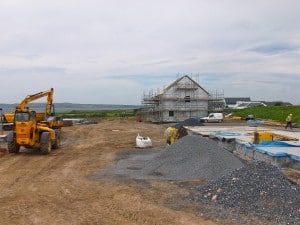 An inspiring talk by Scotland’s Chief Medical Officer, Sir Harry Burns, launched the BEFS annual lecture series last week.
An inspiring talk by Scotland’s Chief Medical Officer, Sir Harry Burns, launched the BEFS annual lecture series last week.
We learned that Scotland continues to lag other countries on a range of health indicators but that innovative solutions are bearing some fruit. The root of our current malaise was traced back to the early 1990s : loss of traditional jobs in heavy industry and housing clearance in the preceding years.
This often bitter period of upheaval in the 1980s and 1990s took its toll. Other nations adapted more successfully : Germany restructured its heavy industries and rebuilt a modern, competitive manufacturing base.
This era also saw individualism and personal wealth take precedence over social cohesion, exemplified by the slightly misconstrued Thatcher cry ‘there is no such thing as society’ (hijacked recently by the twitterati with the retort, ‘as a society can we now say there’s no such thing as Thatcher?’).
Stress caused by low self-esteem, insecurity and a lack of opportunity to influence personal and wider circumstances, resulted in negative behaviour and poor health outcomes.
Sir Harry suggested the built environment has a role in cause and remedy. However, we were left in no doubt that people, place and community ought to be the real focus. Give people and communities responsibility for themselves and they will prosper, he proclaimed, suggesting better use of the planning process to engage and enable local opinion and capacity. We already know it works. We need to do more of it and do it better.
It was interesting to see that the health issue is being addressed on a familiar survey/analysis/plan basis, responding directly to Scotland’s National Outcomes. Equally, it is disappointing to reflect that our development proposals and our built environment decisions often appear detached from the same Outcomes, which are similarly embedded in national planning policy and guidance. Does the built environment profession also suffer from low self-esteem, insecurity and the lack of opportunity to influence?
With Scotland’s Referendum approaching, we are all being asked to consider how we might best influence our personal and wider circumstances. Unfortunately, some of the fearful messages we’ve heard seem designed to undermine self-esteem and engender insecurity. That can’t be helpful in any sense, whatever the outcome in September.
The Referendum result may well prove to be a barometer of self-confidence.
For me, the BEFS lecture was a reminder of the need for holistic approaches, centred on the citizen, community and society. What kind of places do we want to live in? What kind of people do we want to be? If we can answer those questions honestly – and direct appropriate change – we may fully embrace preventative health and responsive place making.
We could make a start by looking at Copenhagen’s ‘Metropolis For People’.
Closer to home, Sir Harry turned to Jimmy Reid as a source of inspiration. The following extract from Reid’s inaugural rectorial address at Glasgow University in 1972 encapsulates the content of the BEFS lecture :
“Let me right at the outset define what I mean by alienation. It is the cry of men who feel themselves the victims of blind economic forces beyond their control. It’s the frustration of ordinary people excluded from the processes of decision making. The feeling of despair and hopelessness that pervades people who feel with justification that they have no real say in shaping or determining their own destinies.”
For more on Jimmy Reid and his legacy, see http://reidfoundation.org and http://allofusfirst.org
Richard Heggie
March 2013


